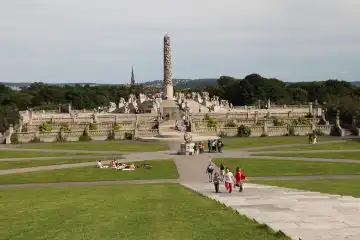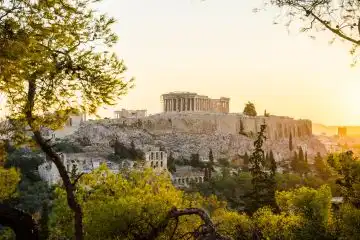Explore architecture and rich history of Florence Italy
Florence, Italy, is a city steeped in history, culture, and artistic grandeur. Here's a guide to explore the rich history of Florence Italy with its architecture to plan a trip. Known as the birthplace of the Renaissance, Florence further boasts an architectural landscape. That meanwhile tells a story of innovation, artistry, and power. From medieval fortresses to opulent Renaissance palaces, every corner of the city reveals a piece of its glorious past.
1. The Birthplace of the Renaissance
Florence played a pivotal role in the Renaissance. That is a cultural movement that reshaped art, science, and architecture. Influential figures for example Leonardo da Vinci, Michelangelo, and Brunelleschi left their mark on the city. Tourists can also explore the colorful places of Lisbon with our travel options. The architectural transformation of Florence during this period introduced classical elements, symmetry, and grand domes. That meanwhile continue to inspire architects worldwide.
The Renaissance was not only about art-but it was also a revolution in thought and design. Architects for example Alberti and Brunelleschi studied ancient Roman techniques. With that, they had reintroduced concepts like proportion and perspective. The result? Some of the world's most stunning buildings, still standing in Florence today.
2. The Magnificent Duomo - Santa Maria del Fiore
No visit to Florence is complete without admiring the Santa Maria del Fiore, commonly known as the Duomo. Designed by Filippo Brunelleschi, its red-tiled dome is an engineering marvel of the 15th century. Firstly, witness the cathedral's intricate facade, detailed frescoes by Giorgio Vasari, and breathtaking views from the dome. That further make it a must-see attraction.
Brunelleschi's dome was unprecedented at the time. The architect devised a herringbone brick pattern and innovative scaffolding techniques. That helped them to complete the self-supporting structure-without the use of wooden framework. Today, climbing to the top offers firstly insight into this engineering feat. It further offers stunning panoramic views of Florence.
3. The Elegant Palazzo Vecchio
A symbol of political power, Palazzo Vecchio has served as Florence's town hall for centuries. This fortress-like palace is adorned with stunning frescoes and sculptures. It further offers insights into the city's governance and Medici influence. Visitors can meanwhile explore its grand halls showing the rich history of Florence Italy. That include the Salone dei Cinquecento, showcasing Giorgio Vasari's impressive artwork.
Palazzo Vecchio also hides secret rooms and passages used by the Medici for quick escapes and private meetings. The Tower of Arnolfo provides another excellent vantage point for city views.
4. The Timeless Beauty of Ponte Vecchio
Spanning the Arno River, Ponte Vecchio is one of the oldest and most famous bridges in the world. Dating back to medieval times, this iconic structure is firstly lined with jewelry shops. That meanwhile preserves rich history of Florence Italy and traditions of fine craftsmanship. The bridge survived World War II bombings, standing as a testament to the city's resilience.
The bridge's unique closed design was historically used by butchers. They used to discard waste directly into the river. However, when the Medici moved into the Pitti Palace, they converted the bridge into a more refined marketplace. That had favored the jewelers instead.
5. The Medici Legacy and the Pitti Palace
The Medici family, renowned patrons of the arts, left an indelible mark on Florence's architecture. However, the Pitti Palace was once the Medici residence. It showcases opulent rooms, exquisite art collections, and the lush Boboli Gardens. This grand palace meanwhile reflects the power and influence of the Medici dynasty during the Renaissance era.
The Boboli Gardens behind the palace became a prototype for European royal gardens. Above all, they had influenced the design of Versailles in France. Walking through its manicured hedges and statues is like stepping into history.
6. Uffizi Gallery - Art and History
One of the world's most renowned museums, the Uffizi Gallery. It firstly houses masterpieces by Botticelli, Raphael, and Caravaggio. The building itself is a fine example of Renaissance architecture, designed by Giorgio Vasari. Strolling through its corridors further offers a visual journey through centuries of artistic evolution.
Each room in the Uffizi is organized chronologically. That allows visitors to see the progression of artistic techniques from the early Renaissance to the Baroque period. In short, this museum is a must-visit for history and art lovers alike.
7. The Stunning Basilica of Santa Croce
Santa Croce is often referred to as the Temple of the Italian Glories. Above all, it is the final resting place of luminaries such as Michelangelo, Galileo, and Machiavelli. Its Gothic architecture is adorned with intricate frescoes by Giotto. That further makes it one of Florence's most significant historical landmarks.
Beyond its tombs, Santa Croce is famous for its stunning cloisters and leather school also. There, artisans craft high-quality goods using traditional techniques.
8. The Charm of Santo Spirito
A hidden gem in Florence, Santo Spirito exudes tranquility and Renaissance elegance. Designed by Brunelleschi, this church boasts a simple yet harmonious facade. Above all, it is an exquisite wooden crucifix sculpted by Michelangelo in his youth.
Santo Spirito's lively square is a favorite among locals. It further offers authentic restaurants, artisan shops, and an authentic Florentine atmosphere away from tourist crowds.
9. The Enchanting Piazza della Signoria
This historic square serves as Florence's open-air museum. It features statues for example Perseus with the Head of Medusa and a replica of Michelangelo's David. The piazza has been the heart of political and social life for centuries. That further offers a glimpse into the city's vibrant past.
The Loggia dei Lanzi is an open-air sculpture gallery in the square. It showcases some of Florence's most famous Renaissance statues. That firstly making it a cultural hub to explore rich history of Florence Italy for art enthusiasts.
10. The Influence of Roman and Medieval Architecture
Before the Renaissance, Florence was shaped by Roman and medieval influences. The Baptistery of St. John stands out further with its striking bronze doors. It showcases the transition from medieval to Renaissance artistry. Meanwhile, Florence's medieval towers, such as Torre della Pagliazza, echo its fortified past.
11. The Transformation of Florence Over Centuries
Florence's architectural landscape continues to evolve while preserving its historical essence. Modern architects carefully integrate contemporary designs with historic structures. That further ensures that the city's aesthetic remains timeless.
Today, Florence maintains strict building codes to protect its skyline. It firstly ensures that modern developments do not overshadow its historic grandeur.
12. Tips for Exploring Florence's Architectural Wonders
To make the most of your visit to explore the rich history of Florence Italy explore Florence on foot. It allows you to admire its stunning buildings up close. Firstly, visit museums early to avoid crowds. Don't forget to climb the Duomo or Bell Tower for panoramic city views. A guided tour can meanwhile provide deeper insights into the city's rich history and artistic achievements.
Conclusion
The rich history of Florence Italy, is intricately woven into its breathtaking architecture. Every palace, bridge, and cathedral meanwhile tells a story of artistic brilliance and historical significance. Whether you're an architecture enthusiast, history buff, or traveler seeking inspiration, Florence offers an unforgettable journey through time.







